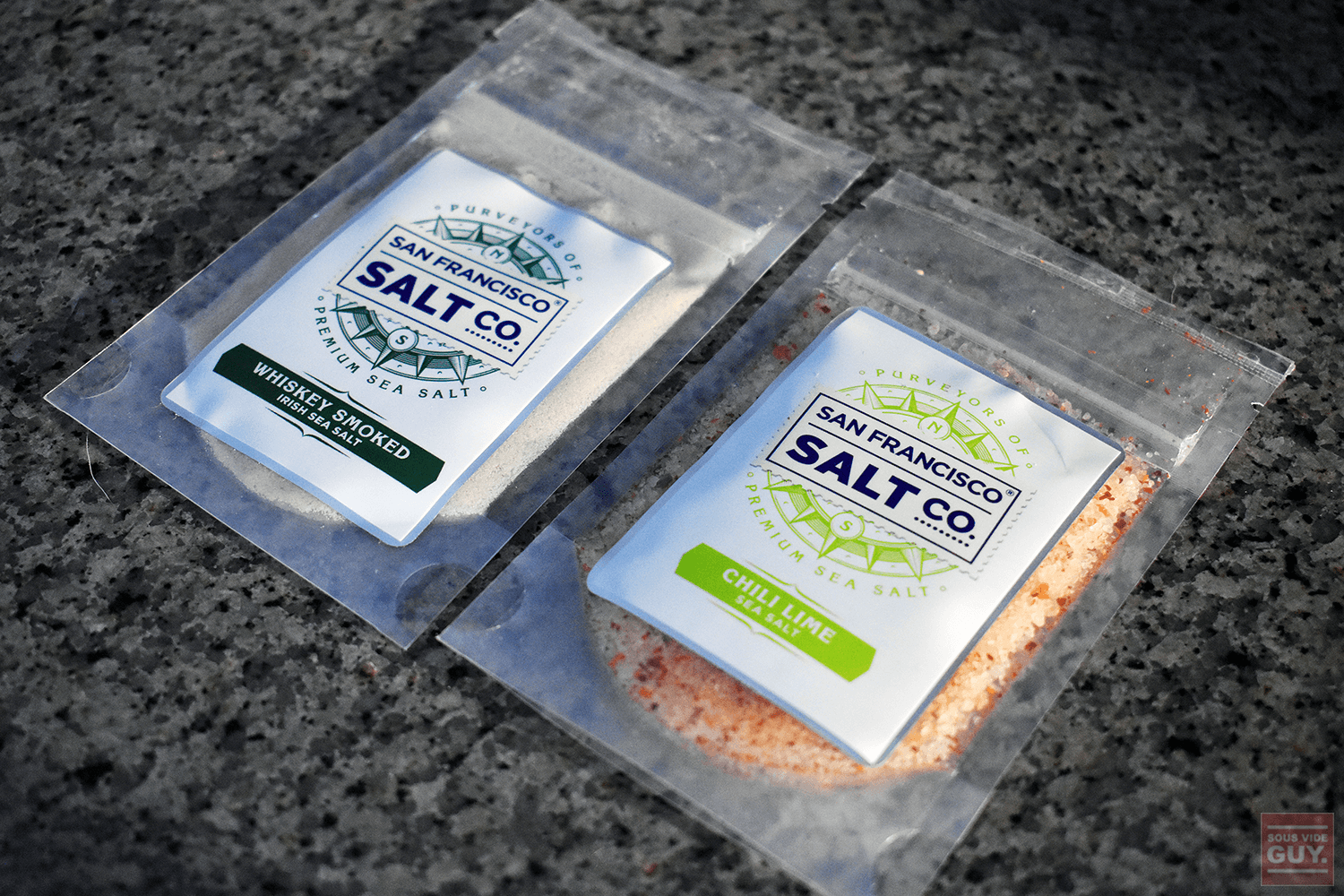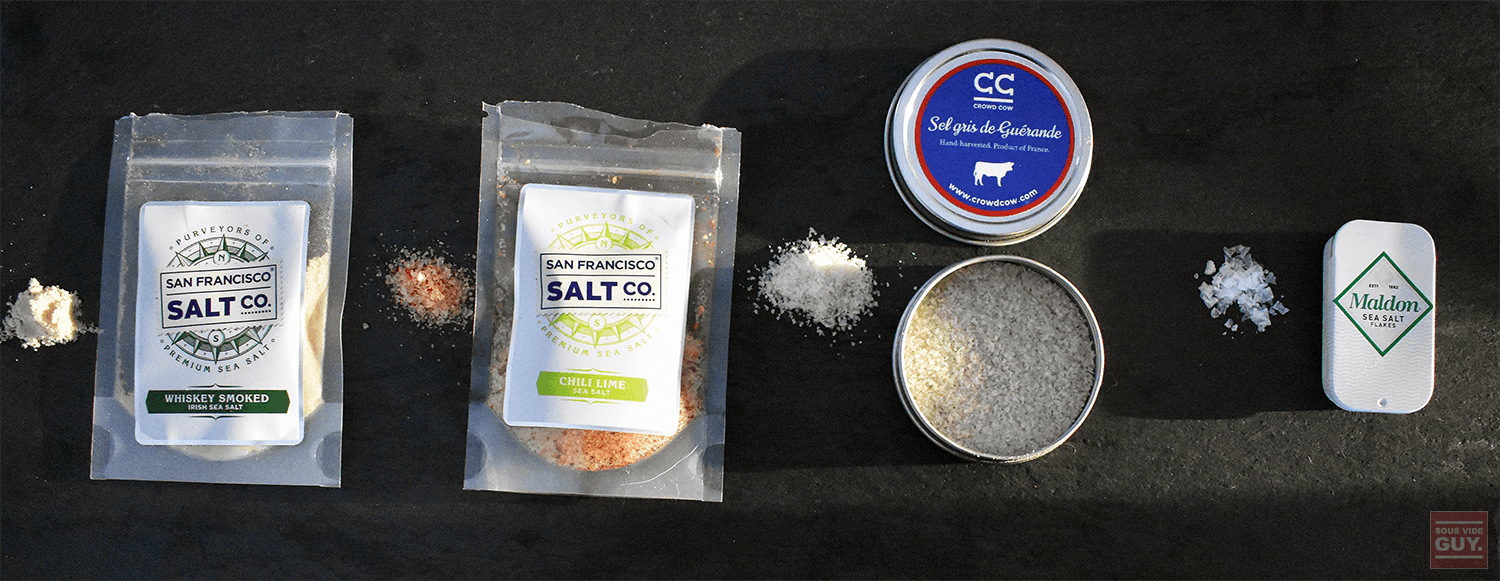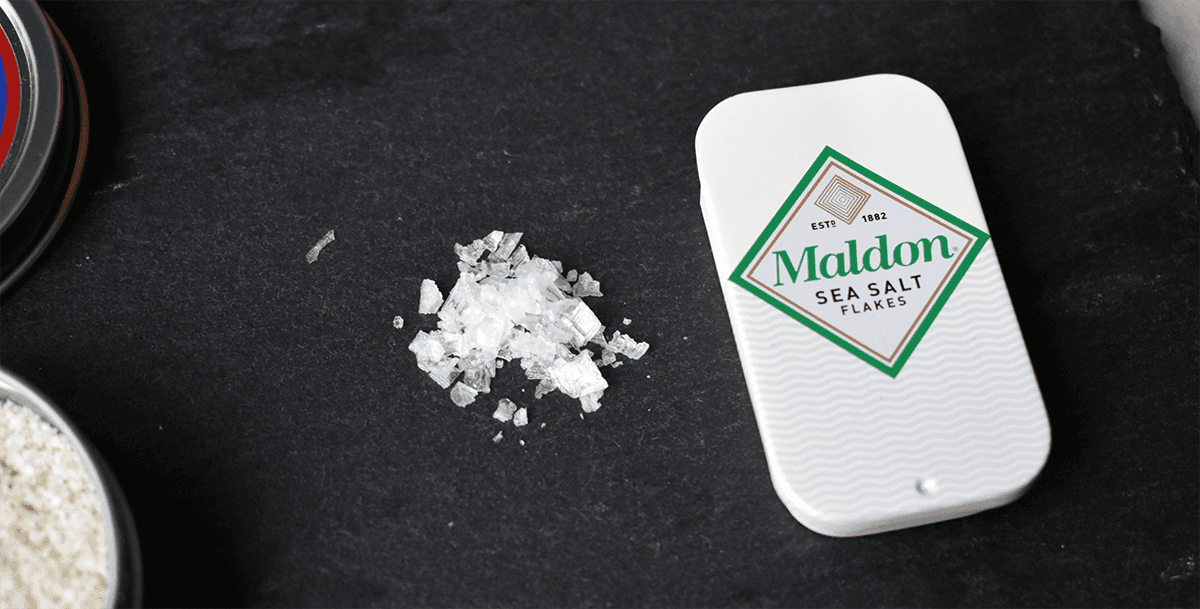Complete Guide to Flavored and Gourmet Salts
Salt is one of the most important compounds for organic life as we know it. Sodium plays a wide variety of roles in not only the human body, but in animals of all kinds. It’s heavily involved in fluid balance, electrolyte balance, and the transmission of nerve impulses. It’s also needed for some metabolic functions.
So it makes sense why we have sodium chloride receptors in our mouths that create that distinctive “salty” taste, and it also makes sense that we sometimes crave salt. It also turns out that salt is a great preservative, and it’s one of the oldest substances used for this purpose. Before refrigeration — that is, for most of human history — salt was very important for preserving food that would otherwise spoil. From salt pork to pickled cucumbers, as well as the canned foods introduced in the 19th century, food preserved in salt is a historic staple that’s still enjoyed today.
Salt is also one of the most important seasonings for cooking, and this is true across a wide range of world food cultures and cuisines. Nearly all groups of people add flavor to their food using a combination of salt, fresh or dried herbs, and spices.
If you’re like most people, you use salt in your own cooking, whether you add it yourself or it’s already present in pre-made ingredients like chicken broth or canned green beans. Then you add whatever combination you choose of herbs and spices.
But what if there were a better way of adding salt? What if your salt also happened to contain a full selection of carefully selected herbs and spices, designed to impart the flavor you want? This might sound strange, but it’s not necessarily a new concept. In fact, you’ve probably used seasoning salt before.

Not all chef salts are seasoning blends, and some simply contain flavorful sea salts from different parts of the world. But, many of the chef salts available from specialty retailers incorporate unique herb and spice blends. These chef salts take the concept of seasoning salts to the next level. Specialty salts like French grey sea salt or pink Himalayan salt are combined in carefully designed proportions with a painstakingly selected blend of spices and herbs, which range from all-American to unusual and exotic. This isn’t your father’s seasoning salt.
This quick beginner’s guide gives a basic overview of what chef salts are, where you can find them, and how you can use them in your own home cooking. Once you try them, you may never go back to standard iodized salt or regular seasoning salt again.
Types of Gourmet Chef Salts
If you’re savvy, a lot of this might just kind of sound like a marketing gimmick. After all, seasoning salt is nothing new, and it’s available in many types and flavors.
There actually are a couple of things that make chef salts distinct, and that really make them stand out from other, more standard seasoning salt blends.
One is the type of salt that’s used in chef salts. It’s not plain old iodized salt, like you probably use regularly at home. It uses other salt varieties that are arguably more flavorful and more texturally interesting.
- Sea salt. Sea salt is acquired by evaporating sea water, leaving salt deposits behind. It has a distinct flavor, and a courser texture that gives a different mouth-feel than other types of table salt. It can also take on different coloration, depending on where it was harvested. Some chef salts incorporate fine sea salt, while others use sea salt with a course texture.
- Kosher salt. Kosher salt has larger grains than regular table salt, and does not contain added iodine. This textural difference has an effect on mouth-feel, and many people use kosher salt at home in a wide variety of dishes.
- French grey salt. This sea salt variety is harvested by hand in the salt marshes near Guérande, a historic town in western France. The town has existed since the middle ages, and the techniques used today to harvest French grey salt have been refined over a thousand years. The grey color occurs because the salt from the seawater crystallizes on local clay. It’s available in both fine and course varieties.
- Pacific sea salt. This salt is manufactured by slowly evaporating seawater from the Pacific Ocean, leaving behind useable table salt. Because it does not contain any additives, it is considered kosher.
- Fleur du Sel. This is another variety of sea salt harvested from the salt marshes of Guérande. It’s actually distinct from French grey salt, which is also harvested there. Fleur du sel is harvested by workers known as paludiers, who carefully skim the surface of salt ponds near where the seawater enters the marsh. This collects only the salt crystals from the uppermost layer of water. Fleur du sel is not ground up after harvesting, giving it a distinctive light texture. It has a high mineral content compared to other sea salts, and its flavor is esteemed by French chefs.
- Himalayan salt. Himalayan salt, also known as “Himalayan pink salt” due to its pinkish to light reddish tint, is one of the most unique varieties of table salt available. If you examine it under a microscope, you’ll see that the crystals themselves are unusually uniform. It’s generally left in its raw, unprocessed form, leaving it with a high mineral content that includes several important micro-nutrients. Because the elements it contains in significant amounts are all biologically important and usable by the human body, it’s easily absorbed when consumed in food. It’s available in a range of grain sizes, from a very fine powder to very large grains.
This is just a partial listing of the regional sea salts that are available.
Some of the chef salts you can purchase consist solely of one of these varieties of gourmet salts, which can impart unique flavors and mouth-feel to a variety of foods. However, there are also quite a few preparations that include a range of herbs and spices, with varieties that suit a wide range of cuisines.
Flavored Chef Salt Blends: A Flavorful and Simple Way to Season Your Cooking
Chef salt blends can incorporate any of a wide variety of herbs and spices, creating a range of flavor profiles inspired by many types of regional cuisines. There are also chef salts that consist of gourmet sea salt or kosher salt that’s been smoked with hickory, cherry, alderwood, or apple wood.
There are blends available with many different flavorful, yet versatile, blends of seasoning in them. You can find sea salt blends flavored with herbes des Provence, black truffle oil, and even Sriracha.
There are also chef salts with playful flavorings like Bacon BBQ, Bamboo Curry, and the intriguingly named Tunisian Fire. Whether you’re cooking classic French nouvelle cuisine, all-American grilled cheeseburgers, or spicy and flavorful South Indian curries, you can probably find a chef salt blend that adds the perfect balance of flavors.
Our Favorite Flavored and Blended Salts

So How Do I Cook with Chef Salts?
Regular chef salts, which contain only gourmet kosher salts or sea salts, can be used in similar ways to regular table salt. For flavoring many dishes, it may make the most sense to use a finer grained chef salt. However, course chef salts are excellent for anything where you’ll want to sprinkle salt across the top of the food. In the sous vide world, Maldon’s sea salt flakes are the infamous go-to for topping mouth-watering steaks and roasts. The sea salt flakes add a wonderful crunch to each bite instead of the fine grained salts which often get absorbed.
Spice Up Your Cooking with Chef Salts
Chef salts, especially the flavorful blends with herbs and spices, are a great way to add some interest and variety to your own everyday cooking. Especially if you’re focusing on clean, healthy eating, herbs and spices (including salt) are an incredibly important culinary factor. Almost anything can taste good if you season it right, even the most seemingly boring low-carb weight loss recipes.
You can get chef salts from several specialty retailers, including Chef Salt and San Francisco Salt Co. If you’re looking for some new ideas to add variety to your kitchen, check them out.


